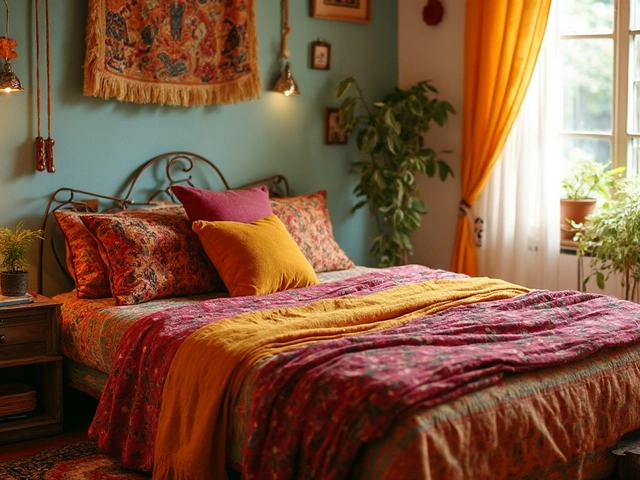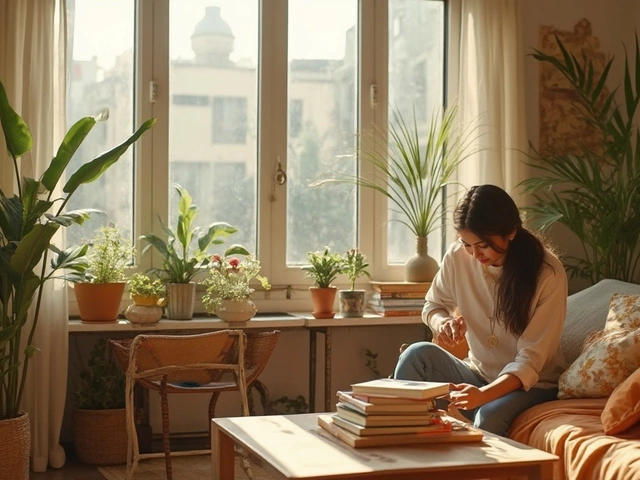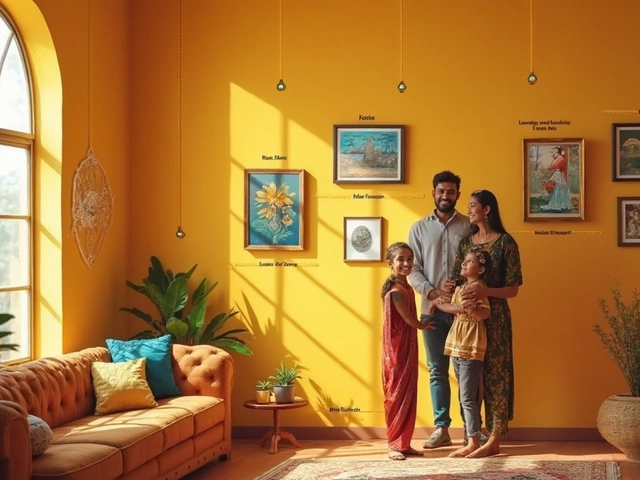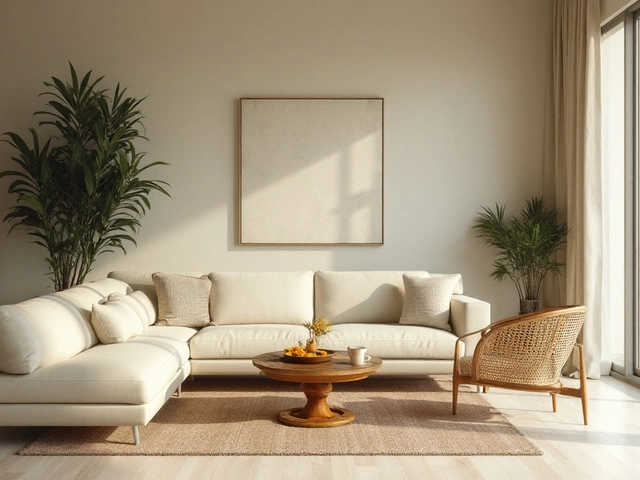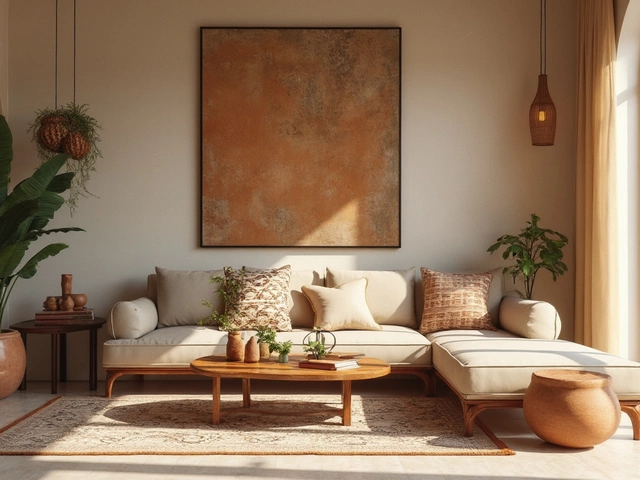If you love making spaces look and feel amazing, but school isn’t your thing, you’re not alone. The world of interior design is packed with people who made it big without a diploma hanging above their desks. So, how do you jump in?
Start by using what you already have—a phone camera and the space around you. Rearrange your living room, paint a wall, thrift some new cushions, then photograph the process. This isn’t just for fun. Each project you complete (even in your own apartment) turns into real proof you know what works. Share the photos online, start an Instagram, or even a TikTok to put your designs out there. People want to see results, not certificates.
Use free or cheap design software like SketchUp or Canva to play around with ideas before you touch a piece of furniture. Plenty of YouTube channels break down room makeovers step-by-step, so you can follow along, pick up tricks, and see what real designers do. Forget fancy jargon—you’ll learn a lot just by getting your hands dirty.
- Getting Practical with DIY and Online Resources
- Building a Portfolio That Pops
- Connecting with the Industry
- Turning Passion into Paid Work
Getting Practical with DIY and Online Resources
If you want to break into interior design but don’t have a degree, the world of DIY is your classroom. No gatekeepers—just roll up your sleeves and get hands-on. There are loads of resources, many of them free, that give you real skills and help you see what works (and what doesn’t) in the real world.
First up: start small. Paint a wall, swap out old curtains, or rearrange your furniture. Try things you’ve never done before—because that’s where learning happens. Take before-and-after photos, make notes about what you like and what you’d do differently next time. These early projects become your practice zone, and your first shots for a portfolio.
Online tutorials are a total game-changer. YouTube channels like Mr. Kate and The Sorry Girls break down room makeovers step by step. On Instagram, you’ll find regular people sharing smart, easy hacks. The Home Depot even offers free DIY workshops. If you need structured learning, sites like Skillshare and Udemy have beginner courses on everything from lighting basics to color theory—and they don’t cost much.
Learning the tech side shouldn’t scare you off. Some free or budget software:
- SketchUp Free for 3D room models.
- Canva for simple mood boards.
- Roomstyler lets you drag and drop furniture into a sample space—great for experimenting.
Not sure which style you like? Test-drive them. Create mood boards for different vibes: boho, industrial, minimalist, and so on. You’ll figure out what matches your eye pretty quickly.
It’s not just about the looks. Learn real tricks: measure everything before you buy, check how sunlight changes the color of a wall, and figure out which materials work best for high-traffic areas. These details separate the real deal from the amateurs.
Here’s a quick look at the most popular free resources people use in 2024:
| Resource | Type | Cost |
|---|---|---|
| YouTube (e.g. Mr. Kate, Lone Fox) | Video Tutorials | Free |
| Canva | Mood Boards | Free (with paid upgrades) |
| SketchUp Free | 3D Design | Free |
| Instagram/TikTok | Real User Inspiration | Free |
| Idea Curation | Free |
Bottom line: You don’t need a fancy diploma to start. You just need a willingness to try, mess up occasionally, and actually finish some real projects. With today’s online tools and DIY guides, learning interior design has never been more hands-on—or more accessible.
Building a Portfolio That Pops
Getting into interior design without a degree means you’ll need something else to prove your skills. That’s where your portfolio steps in. Think of it as your design resume—nobody is asking for your grades, but they’ll want to see what you can actually do.
Don’t wait until you have "real" clients. Use your own space, a friend’s room, or even digital mockups. Each project should show a before-and-after, and if possible, a mood board. Clients and employers love some context—they want to see your thought process, not just the end result. When you present the story of a project ("Here’s what it looked like before, here’s what was bothering me, here’s how I fixed it"), you come off as both creative and logical.
- Start with 3-5 rooms you’ve worked on, even if they’re all in your house or your cousin’s tiny apartment.
- Document the full transformation: take clear photos before, during, and after each design change.
- Create quick mood boards for each project (tools like Canva or Pinterest work great for this step).
- Include short bullet points about your choices—"used thrifted finds to save money," "painted cabinets instead of replacing them," or "created extra storage with floating shelves."
If you’re feeling ambitious, try a digital room design for a pretend client. Plenty of designers get noticed just by posting these make-believe projects online.
Real numbers help, too. Here’s an idea of how a basic portfolio might look if you want to stand out:
| Project | Space Type | Budget | Main Focus |
|---|---|---|---|
| Living Room Makeover | Rental Apartment | $300 | Affordable comfort, bold colors |
| Home Office Refresh | Spare Bedroom | $150 | Functional workspace, minimal clutter |
| Kid’s Room Revamp | Shared Bedroom | $200 | Organized play space, safety |
At every step, show off your eye for design and your ability to work with what you have. A strong portfolio will help you break into this creative career, sometimes even faster than a fancy degree.

Connecting with the Industry
Networking might sound intimidating if you’re just starting out, but it’s seriously where a ton of opportunities come from in interior design. The best part? You don’t need fancy credentials—just some curiosity, initiative, and a willingness to show up.
Start simple. Check out local home shows, design expos, or open houses even if you’re not buying. These gatherings attract real estate agents, decorators, and independent designers—people who already know the ropes. Chat with the vendors, swap Instagram handles, or ask how they got their start. Don’t just hand out business cards; create real conversations and connections.
Social media is your free ticket to the wider industry. Jump into Facebook groups for aspiring designers or join “Design Twitter.” You’ll find a ton of professional advice, calls for collaboration, and even job offers. Tagging your work consistently with trending home decor or creative careers hashtags can help you get noticed. A quick message like, "Hey, I loved your kitchen project—how did you pick those tiles?" starts a conversation way better than a formal pitch ever could.
If you want to get real-world experience, offer to assist established designers. You might help source materials, prep for photoshoots, or even just carry samples. The hands-on stuff is where you’ll learn tricks no online course can teach. According to the American Society of Interior Designers, more than 70% of junior designers say job shadowing or volunteering helped them land paid work faster.
| Networking Strategy | Benefit |
|---|---|
| Attending local events | Meet pros face-to-face, hear about local projects |
| DM’ing on Instagram/Twitter | Get feedback, build direct relationships |
| Shadowing a designer | Gain practical tips, insider knowledge |
Pro tip: Don’t underestimate the power of sharing your journey. Designers and brands love seeing real people learning. As one industry leader, Emily Henderson, puts it:
"Our field is about connection and storytelling—be brave enough to reach out, ask questions, and share your vision. That energy always finds its way back."
If you show genuine interest and back it up with effort, you’ll be surprised how many doors start to open—even without a degree or years of experience.
Turning Passion into Paid Work
Alright, you’ve built up your skills and a half-decent portfolio. So how do you go from just loving interior design to getting paid for it? The trick is to start small, then stack up wins as you go.
First, reach out to family and friends. Offer to redo a room for free or for the cost of materials, just to boost your experience and word of mouth. Don’t worry about big-ticket projects yet. Most beginner designers start with small gigs: entryways, bedrooms, even game rooms.
Once you finish a project, ask your client for a review you can post on your socials or a simple testimonial for your website. These early stories matter way more than a long list of classes you’ve taken. People trust real-life results over lists of degrees.
Platforms like Houzz, TaskRabbit, Upwork, and even Facebook Marketplace can be goldmines for new designers. There are always folks looking for help with everything from picking paint colors to full room makeovers. When you respond to these gigs, make your message personal—say what caught your eye about their project and how your approach would fit. Forget the one-size-fits-all pitch.
Now, let’s talk about pricing. Don’t just guess. Research what local interior design freelancers charge—some average rates in the US for beginner projects run $30–$60 an hour. If you’re not sure where to start, go a bit lower than established pros but don’t undersell yourself. Show the value you bring, even if you don’t have a degree.
| Platform | Type of Job | Typical Beginner Pay |
|---|---|---|
| TaskRabbit | Room Refresh | $20–$50/hr |
| Houzz | Remote Consults | $50–$100/project |
| Upwork | Virtual Design | $50–$200/project |
Invest a bit in business basics—a simple website, a business email, and some printed cards can go a long way. They make you look legit even if you’re working from your kitchen table. As you take on more small projects, you’ll build up referrals. Soon enough, you’ll be surprised when a complete stranger reaches out after seeing your work online.
Don’t forget: social proof is key. People love before-and-afters. Keep snapping pics, sharing stories, and updating your profile. The more proof you show, the easier it’ll be to land your next gig and keep growing as an independent interior design pro—even without a degree.

